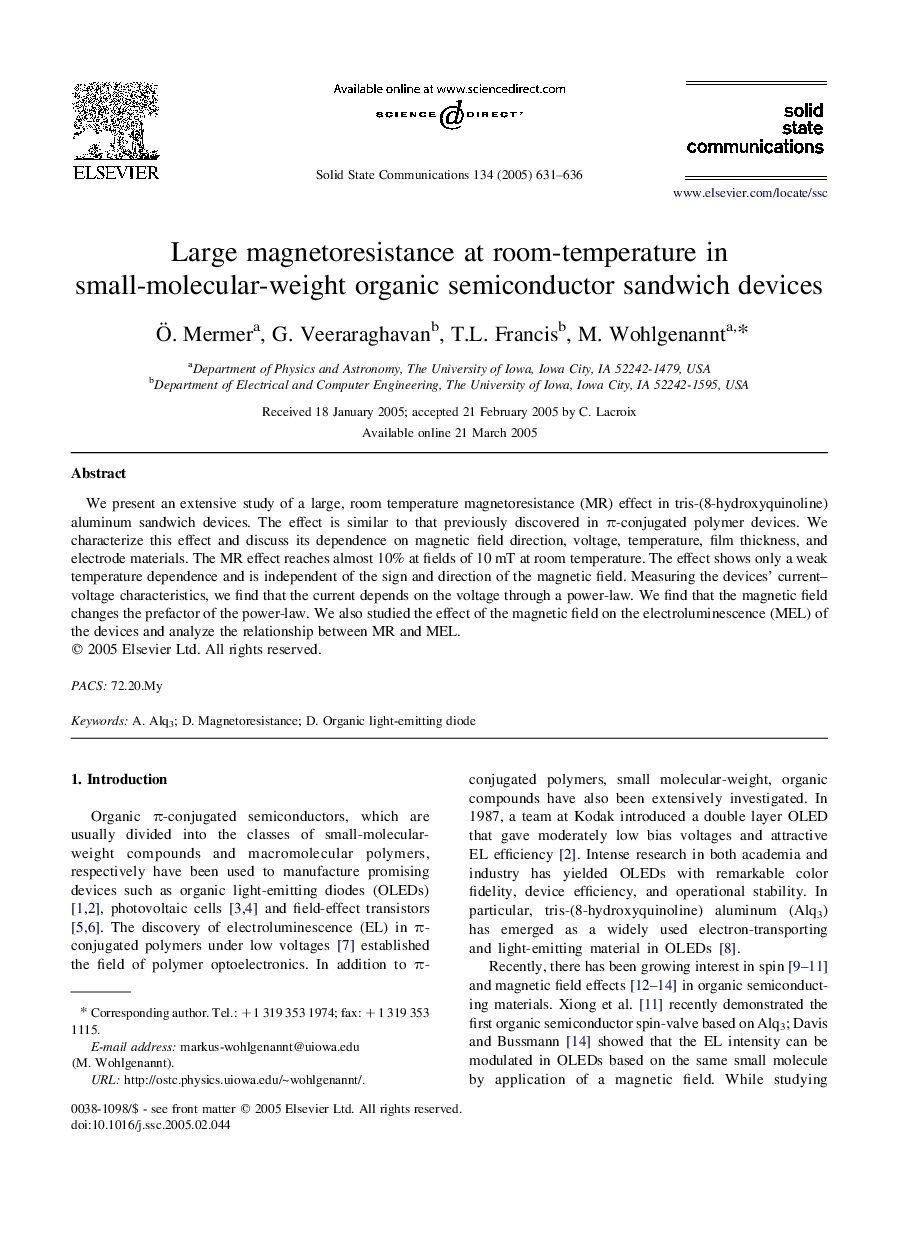| Article ID | Journal | Published Year | Pages | File Type |
|---|---|---|---|---|
| 10653154 | Solid State Communications | 2005 | 6 Pages |
Abstract
We present an extensive study of a large, room temperature magnetoresistance (MR) effect in tris-(8-hydroxyquinoline) aluminum sandwich devices. The effect is similar to that previously discovered in Ï-conjugated polymer devices. We characterize this effect and discuss its dependence on magnetic field direction, voltage, temperature, film thickness, and electrode materials. The MR effect reaches almost 10% at fields of 10Â mT at room temperature. The effect shows only a weak temperature dependence and is independent of the sign and direction of the magnetic field. Measuring the devices' current-voltage characteristics, we find that the current depends on the voltage through a power-law. We find that the magnetic field changes the prefactor of the power-law. We also studied the effect of the magnetic field on the electroluminescence (MEL) of the devices and analyze the relationship between MR and MEL.
Keywords
Related Topics
Physical Sciences and Engineering
Materials Science
Materials Science (General)
Authors
Ã. Mermer, G. Veeraraghavan, T.L. Francis, M. Wohlgenannt,
